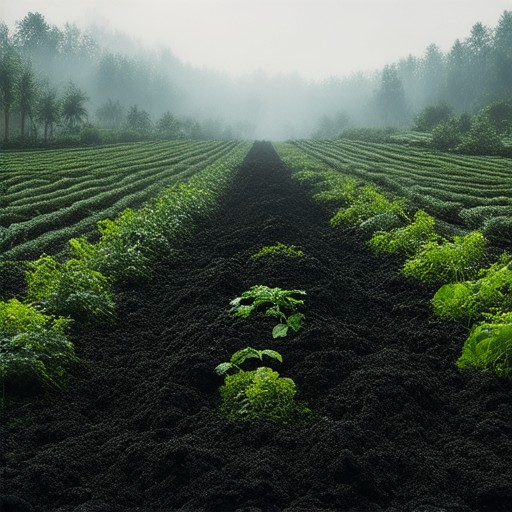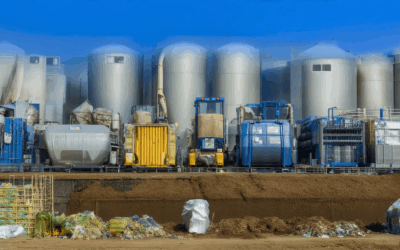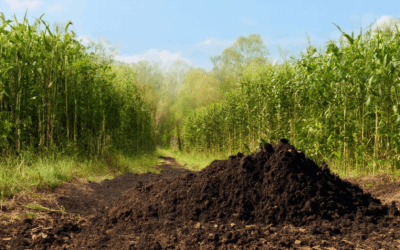Sustainable agriculture has long been a cornerstone of eco-conscious practices, aiming to balance productivity with environmental stewardship. Among the many tools and techniques that have emerged in recent years, biochar stands out as a highly debated yet promising solution for enhancing soil health and promoting agricultural sustainability. While advocates argue that biochar can significantly improve crop yields, reduce greenhouse gas emissions, and promote biodiversity, its efficacy and ethical implications remain under scrutiny. This article delves into the multifaceted role of biochar in sustainable agriculture, exploring its controversial impact, benefits, challenges, and the reasons behind its slow adoption by farmers. By examining both the potential of biochar and the concerns surrounding its use, this piece aims to provide a comprehensive overview of its place in modern farming practices.

Role of Biochar in Sustainable Agriculture
Biochar plays a pivotal role in promoting sustainable agriculture by enhancing soil health, reducing environmental impacts, and supporting crop resilience. Its applications are diverse and contribute significantly to eco-friendly farming practices.
- Enhanced Nutrient Availability: Biochar improves soil fertility by making essential nutrients like phosphorus, potassium, and magnesium more available to plants. This reduces the need for synthetic fertilizers and ensures healthier crop growth.
- Carbon Sequestration: As a stable form of organic carbon, biochar acts as a carbon sink, helping to mitigate climate change by storing carbon in the soil. This aligns with sustainable agricultural practices aimed at combating global warming.
- Water Retention and Erosion Control: Biochar enhances soil structure, improving its ability to hold water and reduce runoff. This minimizes soil erosion and ensures better water distribution, which is crucial for drought-resistant crops.
- Pathogen and Pest Suppression: Biochar has shown potential in reducing the presence of soil-borne pathogens and pests. This reduces the reliance on harmful chemicals and contributes to integrated pest management (IPM) practices.
- Supports Microbial Activity: Biochar stimulates microbial activity in the soil, leading to improved decomposition of organic matter and increased soil organic content. This fosters a healthier soil ecosystem.
The use of biochar aligns with sustainable farming principles by promoting resource efficiency, biodiversity, and long-term agricultural productivity. By incorporating biochar into farming systems, farmers can achieve greater yields, reduced input costs, and a more sustainable land management approach.
For more information on biochar production and its benefits, visit our website to explore how we can support your sustainable agriculture efforts.
Controversy Surrounding Biochar
Biochar, a carbon-rich substance produced through pyrolysis of organic materials, has sparked debate due to several factors:
- Environmental Impact Concerns: The production process, involving high temperatures, raises questions about energy usage and emissions, conflicting with environmental goals.
- Effectiveness and Scientific Evidence: While some studies highlight its benefits for soil health, others question its proven impact on crop yields and overall agricultural productivity.
- Regulatory and Quality Issues: Lack of standardized regulations can lead to variability in biochar quality, affecting trust and reliability among users.
- Economic Accessibility: High production costs and resource requirements may limit biochar’s adoption, particularly for smaller-scale users.
- Potential Negative Effects: Excessive use has been linked to soil nutrient imbalances and disruptions in microbial activity, raising concerns about long-term sustainability.
- Market Competition: Biochar faces competition from traditional soil amendments, prompting discussions on its unique advantages versus alternatives.
These factors collectively contribute to the ongoing debate about biochar’s role in sustainable agriculture and its place in farming practices.

What Are the Negatives of Biochar?
- Potential reduction in crop yield due to the sorption of water and nutrients by biochar.
- Reduced efficacy of pesticides and herbicides as they can be sorbed by biochar, potentially weakening their effectiveness.
- Some biochars may contain contaminants such as heavy metals (e.g., lead, arsenic), which can pose health risks if ingested or inhaled.

Why Don’t Farmers Use Biochar?
Farmers may choose not to use biochar due to several factors:
- High Production Costs : The process of creating biochar, often through pyrolysis, can be expensive and energy-intensive. This cost barrier makes it difficult for farmers with limited budgets to adopt biochar widely.
- Lack of Awareness : Many farmers may not be aware of biochar’s benefits or how to effectively integrate it into their farming practices. Education and outreach programs could help bridge this gap.
- Regulatory Hurdles : In some regions, there may be regulations or certifications required for biochar use, which can add complexity and delay adoption.
- Uncertain Market Demand : Without a consistent market for biochar products, farmers might be reluctant to invest in its production. Integrating biochar into existing markets like compost or fertilizers could help establish demand.
- Competition from Traditional Methods : Established farming practices using conventional fertilizers and pesticides have been reliable, making farmers cautious about adopting new methods without clear evidence of improved outcomes.
- Limited Availability : Biochar may not be easily accessible to farmers, further complicating its adoption.
- Unclear Testing Standards : Without standardized testing protocols, farmers may be unsure of biochar’s quality and effectiveness, leading to hesitation.
By addressing these challenges, biochar could become a more widely accepted and effective tool for improving agricultural practices.
Is Too Much Biochar Bad for Plants?
Biochar, a form of charcoal produced through pyrolysis, is widely recognized for its benefits in improving soil health and promoting sustainable farming practices. However, like many amendments, applying too much biochar can lead to negative outcomes for plants. Here’s a breakdown of the potential downsides:
- Nutrient Competition: Biochar has a high surface area, which allows it to adsorb and retain nutrients like nitrogen. Excessive application can create a scenario where these nutrients are tied up in the biochar, reducing their availability for plants, potentially leading to deficiencies.
- Microbial Disruption: Biochar can influence the soil’s microbial population, which plays a crucial role in nutrient cycling and soil aggregation. Overloading the soil with biochar may suppress beneficial microorganisms, disrupting the delicate balance necessary for optimal plant growth.
- pH Changes: Biochar can alter the soil’s pH levels, which are critical for plant root function. An extreme shift in pH, whether too acidic or too alkaline, can stress plants and hinder their ability to absorb essential nutrients effectively.
While biochar offers numerous benefits, it’s essential to use it judiciously. Applying it in excess can negate its positive effects, leading to challenges such as nutrient leaching, reduced microbial activity, and unfavorable pH shifts. For optimal results, adhere to recommended application rates tailored to your specific crop needs and soil conditions.

Risks of Biochar Production
Biochar production involves several potential risks that could negatively impact its effectiveness, environmental benefits, and safety. Here are the primary risks associated with biochar production:
- Presence of Contaminants: Biochar produced from contaminated feedstocks may contain harmful substances such as polycyclic aromatic hydrocarbons (PAHs), heavy metals, and dioxins. These contaminants can degrade soil quality and pose risks to plant and animal health.
- Safety Hazards During Production: The high-temperature processes involved in biochar production can generate heat, smoke, and fumes that may pose safety risks for workers and operators. Proper ventilation and safety equipment are essential to mitigate these hazards.
- Resource Depletion: The production of biochar requires significant amounts of biomass, which competes with food crops and other agricultural products. This can lead to land-use conflicts and contribute to resource depletion.
- Carbon Emissions: While biochar production reduces greenhouse gas emissions compared to traditional farming methods, the process itself still emits carbon dioxide. Critics argue that the carbon footprint of biochar production may not always outweigh its benefits.
- Pathogen Risk: If the feedstock used for biochar production contains pathogens, the resulting biochar could potentially spread these organisms, posing health risks to humans and animals that come into contact with it.
To address these risks, it’s crucial to source clean, uncontaminated feedstocks and adhere to strict safety protocols during the production process. Additionally, optimizing the production method and ensuring proper handling and storage of biochar can minimize these risks and maximize its beneficial effects.
For more information on sustainable practices and biochar production, visit our sustainable living section or explore our eco-technology resources.




0 Comments